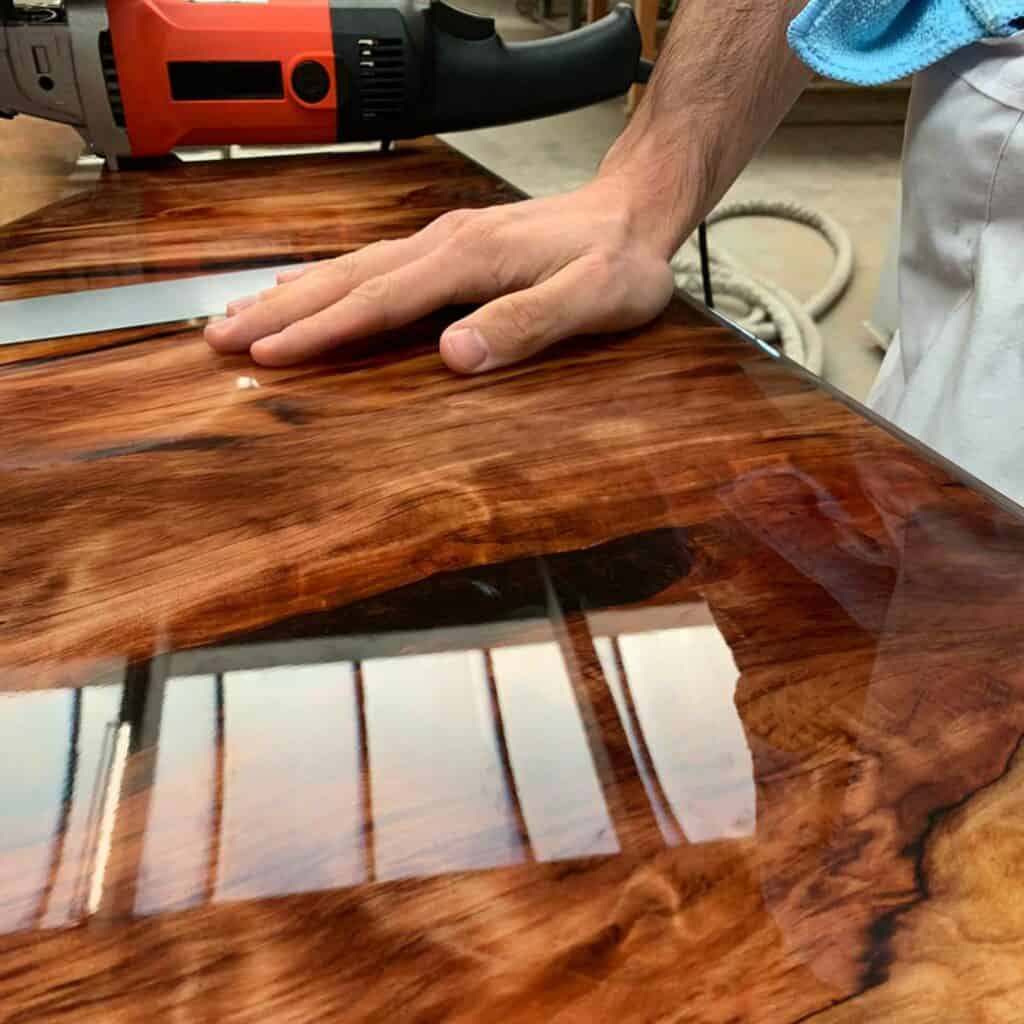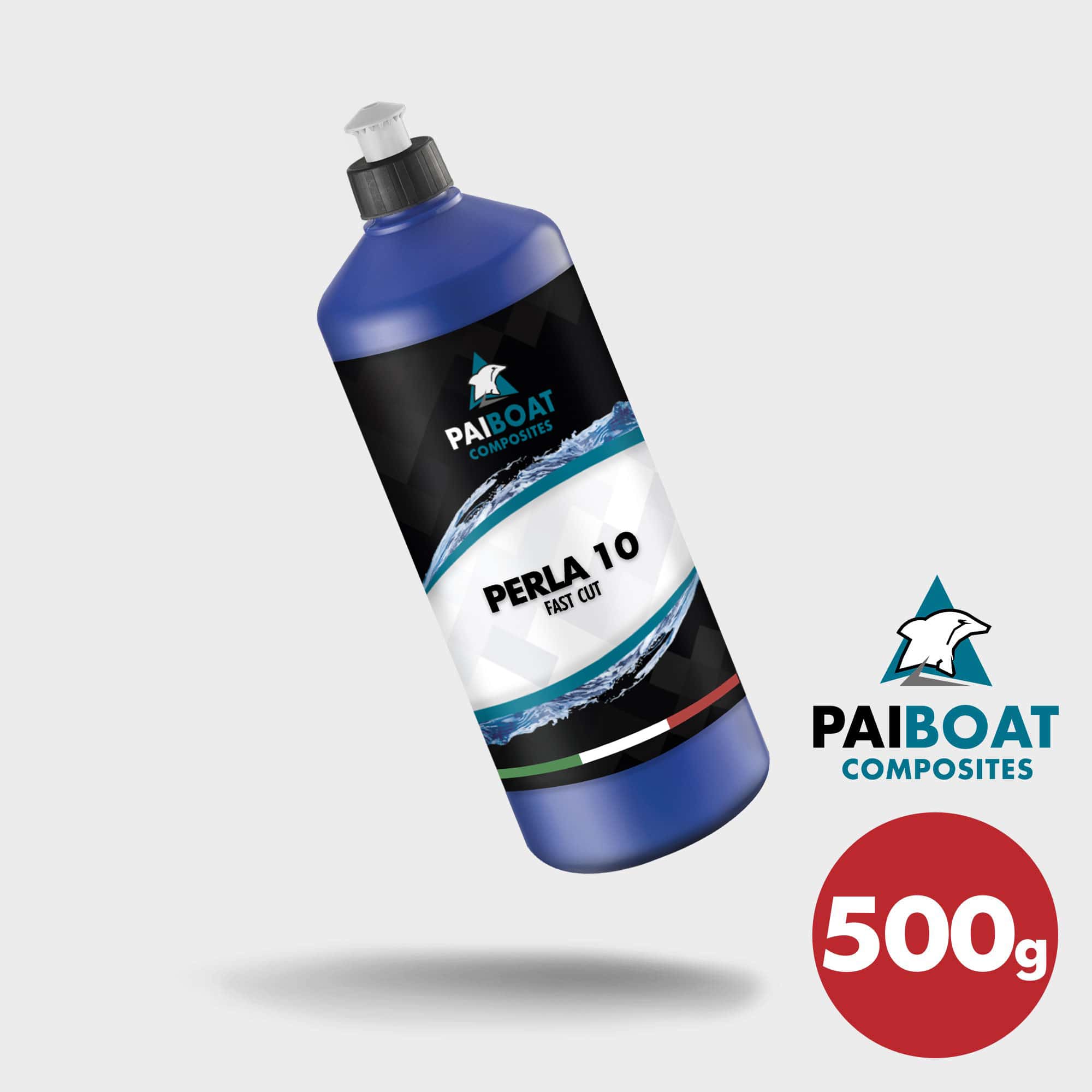May 20, 2021 / By admin
How to polish an epoxy resin table
In this article we are going to see how to polish epoxy resin. This resin has become increasingly common, especially for the creation of wooden river tables with the most varied and spectacular designs.
In this article, we do not focus on how to make a table, or how much epoxy is needed to do it, nor on the procedure for pouring the resin itself. By the way, this technique is used not only for making such resin tables, but also for many other artistic creations, for particular floors as well as for different pieces of furniture.
In this article, instead, we focus on the final step of the process, which is the preparation before polishing and the polishing itself. Which are then the decisive phases that give aesthetic value and prominence to one’s artistic creation.
Let’s start by saying that not all epoxy resins are created equal. There are more or less matte resins, more or less polishable. However, epoxy is a type of resin that tends to be quite hard and “naturally” tends to be matte. For this reason, it is extremely important to deal with the surface finishing phase by carefully following some well-defined steps.
Discover the paicristal.shop and Pai Boat Composites products available online!
Discover our online store and all the Pai Boat Composites treatments for epoxy resin CLICK HERE!


How to sand and smooth an epoxy resin table
The sanding process is a crucial step in the creation of the epoxy resin wood table. In fact, an excellent finish and a perfect polishing depend on the care with which the surface has been prepared with the sandpaper. The sanding phase before polishing is exceptionally important.
It is necessary to have at hands at least grits from 120 to 3000. The process can vary according to the type of epoxy resin (i.e. the hardness of the resin), as well as the polishing compound that will be used later (i.e. how much abrasive is the compound).
However, we can say that a standard process is using these sanding papers in a row: 120, 240, 320, 500, 800, 1000, 1500, 2000, 3000. Our advice is to make a “wet sanding”, which means spraying water on the surface before and while sanding. This will make the sanding process smoother and the result more even. You can use the sandpaper by hand. However, our suggestion is to use an orbital sander: this makes the finish more precise and homogeneous, as well as it speeds the process up.
Sandpaper
It is quite important that each step of sanding paper perfectly removes the marks of the previous paper: you have to be really meticulous and careful on this point. What’s the idea? The 240-grit paper must completely remove the marks coming from the 120 grit; the 320 grit must completely remove the marks coming from 240 grit; and so forth. What is the risk otherwise? The risk is that in the following polishing process, the polishing compound easily removes marks of the finer paper (in this case 3000), as well as it removes any residual marks of 1000 and 1200, but it is not be able to get rid of earlier coarse grits, if they have not been properly removed. This is a crucial point for a proper finish that then gives you due satisfaction.
Finally, note that if you choose for a matte finish of the resin river table, it will be sufficient to stop at 320-grit paper, or go till 500 grit, depending on the degree of opacity you wish to achieve. As said above, by using the orbital sander, it will be easier and faster gaining a very nice and homogeneous satin effect.




How to polish the epoxy resin
Polishing by hand, with a drill or with a polisher?
Here we are at the final stage, the polishing of resin and wood tables, both the fully epoxy ones and the particular river tables. An excellent preparation and a precise finish realized with sandpaper, makes the process with the abrasive paste faster, more effective and satisfying.
Sometimes there is a bit of confusion about the concept of abrasive compound. Let’s try to clarify this, very briefly and simplifying. We can say that an abrasive paste (or compound) is a kind of light sanding paper, which, unlike paper, in addition to abrasive agents, contains also polishing agents. This is why some people simply call it polishing paste. The product for polishing the epoxy resin must therefore contain a good balance of abrasive agents and polishing agents, to be able to guarantee, at the same time, both the removal of paper marks (i.e. opacity) and the achievement of the wished glossy effect.
As said above concerning the sanding process, when you are ready to polish a table with epoxy resin, it is also recommended to use an electrical tool, namely a polisher, preferably with adjustable speed. The surface can be polished by hand, alternatively, which is anyway convenient on small surfaces and narrow areas. On large areas, such as a table of a certain size, using the polisher guarantees a faster action and a more homogeneous finish. On the other hand, we do not recommend using an angle grinder, because it has a non-adjustable and too high speed, which does not allow the polishing paste to work properly. Further, it tends to excessively overheat the resin: be careful, if the resin overheats, it burns and gets unevenly matte.
Drill
As an alternative to the polisher, you can also use a drill. A simple drill to which you can attach a little back plate and a small foam pad. The use of the drill is very popular among enthusiasts and DIY’ers, being a commonly used tool and usually always present at home.
Which accessories and which abrasive compounds to polish epoxy tables?
Having clarified different ways of of application (by hand, with a drill, with a polisher), let’s look now at which accessories are more suitable in combination with the polishing compound. If you polish by hand, you can use a microfiber cloth, like this one, or cotton wool, or you can take advantage of this Holder for hand-use pad, where you can attach the same pads that you would use with the electric polisher.
In fact, specific foam pads are used in combination with the polisher or the drill. The most common one is made of a medium-hard foam, like this one. Here below the standard polishing process on wooden and epoxy tables:
- spread the PERLA 10 abrasive paste evenly on the surface;
- set the polisher at low speed (between 800 and 1000 rpm), then begin to polish, moving across the surface with crossed movements, it means from top to bottom and from right to left: the concept is to avoid staying too much on the same point, in order not to overheat the resin;
- gradually increase the speed of the polisher, you can reach 1500-2000 rpm: by increasing the speed and reducing the pressure on the surface, you are polishing the resin back up to gloss;
- wipe the surface with a clean cloth and check the result: if there are still some scratches or dullness here and there, or if you want to increase the glossy effect, you can do further steps, starting back from point 1.



PERLA 10 polishing paste is the specific abrasive compound for polishing epoxy resin. It contains that ideal balance of abrasive and polishing agents that we talked about before. In most cases, this is the only product needed to polish your amazing piece of furniture. Its specifically designed formula can effectively work even directly on 1200 grit and generates minimum heat.
Lamb wool
We care also to point out that some users prefer to take advantage of lamb wool pad like this one, in place of foam pads. Wool has the great advantage of heating the resin less during polishing than foam.
If you wish to have an even shinier table, there is a second type of polishing paste, which is definitely helpful. Being a finer paste than PERLA 10 , it is advisable to use it with a softer foam, like this one. Here is the procedure, step by step:
- apply a few drops of PERLA 15 polishing paste here and there on the surface; alternatively apply a few drops directly on a blue medium-soft foam pad;
- adjust the polisher to a low speed (between 800-1000 rpm) and polish by moving with crossed movements;
- compared to the previous application of PERLA 10 abrasive paste, the pressure to put on the surface is lower and you can increase the speed to 2000 rpm even earlier;
- wipe the surface with a clean microfiber cloth.
How to keep the epoxy resin shiny and protected?
We have finally come to an end, the epoxy table shines in all its glory. The last piece of advice we would like to share is on how to maintain high gloss over time and how to take care of the surface, without damaging it.
It is always better to avoid using generic or too aggressive degreasers, which risk compromising the degree of gloss of the resin, in the long run. Further, if you want to delay the natural oxidation process, which makes the resin gradually get yellow and matte, it is advisable to protect the surface with a specific product.
For such purpose, Flash Touch is an extremely useful product. It is an all-round product because it acts both as a non-aggressive neutral detergent and as a protective wax. Flash Touch is a product to be simply applied by spraying: it removes dirt, grease, fingerprints from the surface. At the same time, it leaves a thin protective and shiny film on the epoxy resin, which helps prevent the adhesion of dirt and dust, as well as protects from UV rays, in case your table is exposed to them during the day.
You can apply it with a soft microfiber cloth like this one, at least once a month if you want to renew the protective film. Or whenever you want to clean the table very quickly, providing it with that extra touch of gloss.
Discover the paicristal.shop and Pai Boat Composites products available online!
Discover our online store and all the Pai Boat Composites treatments for epoxy resin CLICK HERE!
Do you want more information about Pai Boat Composites products?
Video tutorial – Easy Composites
If you are interested in a guide dealing with the creation of a so-called “River table” in epoxy resin, we recommend this complete video tutorial. You will also find a PDF brochure with step-by-step instructions.

